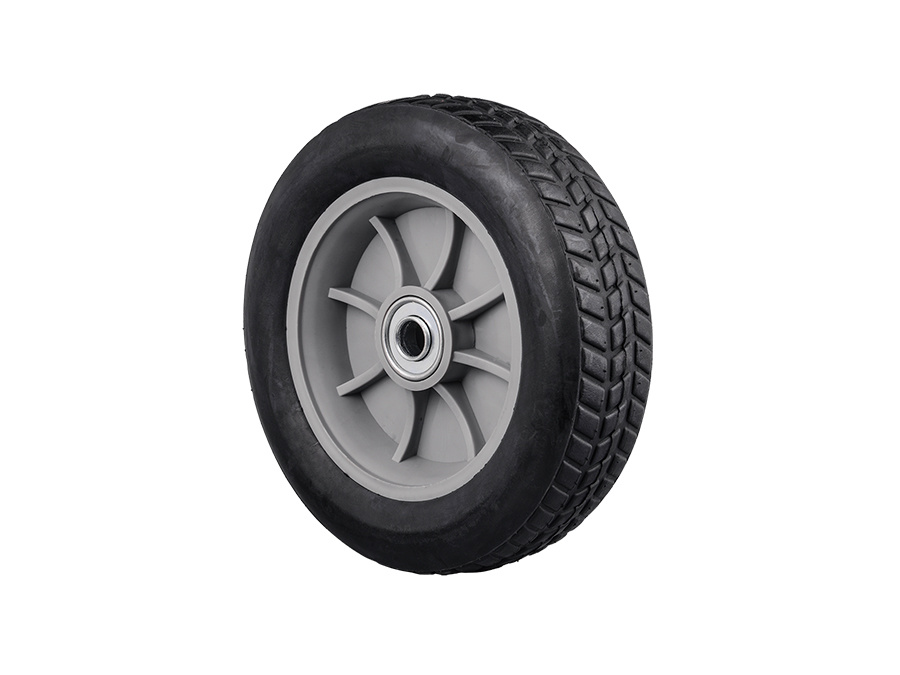News
The Essential Role of Semi-Pneumatic Rubber Wheels in Modern Automotive Design
Release time:
2025-05-26 12:20
The Essential Role of Semi-Pneumatic Rubber Wheels in Modern Automotive Design
Table of Contents
1. Introduction to Semi-Pneumatic Rubber Wheels
2. Understanding Semi-Pneumatic Rubber Wheels
3. Advantages of Semi-Pneumatic Rubber Wheels
3.1 Safety Benefits
3.2 Comfort and Performance
3.3 Environmental Impact
4. Applications of
The Essential Role of Semi-Pneumatic Rubber Wheels in Modern Automotive Design
Table of Contents
- 1. Introduction to Semi-Pneumatic Rubber Wheels
- 2. Understanding Semi-Pneumatic Rubber Wheels
- 3. Advantages of Semi-Pneumatic Rubber Wheels
- 4. Applications of Semi-Pneumatic Rubber Wheels in Automotive Design
- 5. Future Trends in Semi-Pneumatic Rubber Wheel Design
- 6. Conclusion
- 7. FAQs
1. Introduction to Semi-Pneumatic Rubber Wheels
In the evolving landscape of automotive design, **semi-pneumatic rubber wheels** have emerged as a pivotal component. Their innovative design combines the features of traditional pneumatic tires with solid wheels, offering unique benefits that cater to the modern automotive industry's demands. This article explores how these wheels are not only reshaping the design of vehicles but are also integral to improving performance, safety, and user experience.
2. Understanding Semi-Pneumatic Rubber Wheels
Semi-pneumatic rubber wheels are engineered to strike a balance between **solid and inflatable tires**. Unlike traditional pneumatic tires that rely solely on air pressure, semi-pneumatic wheels feature a unique **construction of rubber and foam materials**. This design allows for a slightly cushioned ride while eliminating the risk of punctures associated with standard tires.
The **semi-pneumatic structure** consists of a solid outer shell and a foam-filled inner layer. This configuration is designed to absorb shocks and vibrations, offering a smoother ride without sacrificing durability or load-carrying capacity.
3. Advantages of Semi-Pneumatic Rubber Wheels
3.1 Safety Benefits
Safety is paramount in automotive design, and semi-pneumatic rubber wheels provide several key advantages in this area. Their **puncture-resistant design** ensures that operators can maintain control even after sustaining damage, making them ideal for a variety of applications. Additionally, these wheels offer superior grip on both wet and dry surfaces, enhancing vehicle stability and reducing the likelihood of accidents.
Moreover, the shock-absorbing properties of semi-pneumatic wheels mitigate road vibrations, which can improve overall handling and driver comfort. This is especially important in high-speed scenarios or rough terrain, where maintaining control is essential for safety.
3.2 Comfort and Performance
The performance attributes of semi-pneumatic rubber wheels are significant. With their ability to absorb shocks and vibrations, these wheels enhance ride comfort. This quality is especially advantageous for vehicles used in urban environments, where potholes and uneven surfaces can disrupt the driving experience.
Additionally, the **load-carrying capacity** of semi-pneumatic wheels allows them to support heavier vehicles without compromising performance. This makes them suitable for a diverse range of automotive applications, from passenger cars to heavy-duty utility vehicles.
3.3 Environmental Impact
As the automotive industry shifts towards sustainability, semi-pneumatic rubber wheels contribute positively to environmental efforts. Their durability results in a longer lifespan compared to traditional tires, reducing waste and the frequency of replacements. Furthermore, the materials used in their construction can be sourced sustainably, promoting eco-friendly manufacturing practices.
The reduced need for air pressure maintenance also leads to fewer emissions from vehicles, aligning with the industry's goal to minimize its carbon footprint.
4. Applications of Semi-Pneumatic Rubber Wheels in Automotive Design
4.1 Automotive Vehicles
In the realm of **automotive vehicles**, semi-pneumatic rubber wheels have found their place in several innovative designs. From family sedans to sports cars, these wheels offer a blend of performance and comfort that appeals to consumers. Their safety features, such as puncture resistance, make them a favored choice for **urban driving conditions**, where the risk of tire damage is higher.
Manufacturers have begun integrating semi-pneumatic wheels into their vehicle designs, recognizing the growing consumer demand for reliability and safety.
4.2 Utility Vehicles
Utility vehicles, including forklifts and delivery trucks, benefit immensely from semi-pneumatic rubber wheels. The heavy loads and frequent usage in various environments demand a tire solution that can withstand rigorous wear and tear. Semi-pneumatic wheels provide the durability and reliability required in these scenarios, ensuring operational efficiency.
Moreover, these wheels minimize downtime caused by tire repairs or replacements, significantly improving productivity in commercial operations.
5. Future Trends in Semi-Pneumatic Rubber Wheel Design
As automotive technologies continue to evolve, so too does the design of semi-pneumatic rubber wheels. Future trends indicate a shift towards **smart tire technology**, where sensors embedded within the wheels provide real-time data on pressure, temperature, and wear. This information can help manufacturers and drivers make informed decisions on tire maintenance and replacement.
Additionally, advancements in material science could lead to lighter and more resilient semi-pneumatic rubber wheels, further enhancing vehicle performance and efficiency. The integration of sustainable materials will continue to play a crucial role in shaping the future of semi-pneumatic wheels, aligning with global sustainability goals.
6. Conclusion
Semi-pneumatic rubber wheels are redefining modern automotive design through their unique combination of safety, comfort, and performance. As the automotive industry embraces innovation, these wheels stand out as a crucial component that meets the demands of today's consumers and operational needs. Their ability to enhance vehicle reliability while contributing positively to sustainability efforts makes them a vital element in the automotive landscape. With ongoing advancements and increased adoption, the future of semi-pneumatic rubber wheels looks promising, paving the way for safer and more efficient vehicles.
7. FAQs
What are semi-pneumatic rubber wheels?
Semi-pneumatic rubber wheels are designed with a solid outer shell and a foam-filled inner layer, providing a combination of durability and shock absorption without the risk of punctures.
How do semi-pneumatic wheels enhance safety?
These wheels are puncture-resistant, provide superior grip in various conditions, and absorb shocks, contributing to improved stability and control.
What types of vehicles commonly use semi-pneumatic rubber wheels?
Semi-pneumatic wheels are increasingly used in passenger vehicles, utility trucks, forklifts, and other commercial vehicles where durability and performance are essential.
Are semi-pneumatic wheels environmentally friendly?
Yes, their longer lifespan reduces waste, and sustainable materials can be used in their production, aligning with eco-friendly manufacturing practices.
What future trends are emerging in semi-pneumatic wheel design?
Future trends include the integration of smart tire technology for real-time monitoring and advancements in materials for better performance and sustainability.
semi pneumatic rubber wheel
Previous Page



